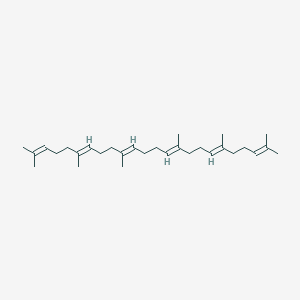-
Categories
-
Pharmaceutical Intermediates
-
Active Pharmaceutical Ingredients
-
Food Additives
- Industrial Coatings
- Agrochemicals
- Dyes and Pigments
- Surfactant
- Flavors and Fragrances
- Chemical Reagents
- Catalyst and Auxiliary
- Natural Products
- Inorganic Chemistry
-
Organic Chemistry
-
Biochemical Engineering
- Analytical Chemistry
- Cosmetic Ingredient
-
Pharmaceutical Intermediates
Promotion
ECHEMI Mall
Wholesale
Weekly Price
Exhibition
News
-
Trade Service
Confocal microscopes have been on the market for more than 25 years.
Who knows who uses it
25mm wide-field imaging: the same sample, Nikon will give you more information
In the past, the conventional confocal microscope field of view was 18mm (diagonal), the imaging field of ordinary fluorescence microscope was 22mm, and the imaging field of Nikon’s new AX/AX R series had a diagonal field of view of 25mm-in upright and inverted microscopes, in galvanic flow Both the meter imaging mode and the resonance imaging mode can achieve a perfect match, and the imaging area is twice as large as the 18mm imaging area
Higher resolution: Nikon gives you more details
To publish cutting-edge research results, you need to see more details, use technological breakthroughs to try new applications, and collect more reliable data
The scanning resolution level of the imaging mode of the Nikon AX series galvanometer has been expanded from 4K×4K to 8K×8K
Using Nikon's NIS-Elements ER module to expand the resolution, the spatial resolution of confocal imaging can be increased to 120 nm (lateral) in the XY direction and 300 nm (axial) in the Z-axis direction
The imaging speed is faster, and the laser damage to the sample is minimized
Laser scanning confocal imaging uses extremely high optical density point illumination and requires point-by-point scanning to illuminate the sample.
oss-cn-shenzhen.
Due to the higher sampling speed, compared with conventional scanning, Nikon AX series lighting time is shortened by more than 20 times, so the phototoxicity has been significantly reduced, which allows living samples to obtain a longer survival time and can be performed at higher frequencies.
Improved detector sensitivity, flexible configuration
In addition to speed, the sensitivity of living specimens is also concerned-can weaker fluorescent signals be collected? Therefore, a high-sensitivity detector is very important
The detector of Nikon AX system has two configurations, one is standard configuration and the other is spectral mode
The core of imaging: the objective lens is better than Nikon
Choose a suitable objective lens.
Some researchers like to find ways to modify the microscope to suit their individual needs
How to get satisfactory images quickly?
The ability to obtain satisfactory images easily and quickly is really "desirable" for researchers who do not want to spend time studying the operation of various instruments
To this end, Nikon has introduced an artificial intelligence module capable of deep learning in the field of confocal microscopes
.
The Nikon AX series provides 6 AI modules-1 AutoSignal.
ai module for the shooting process, 2 AI modules for image processing, and 3 open AI modules-one-click to solve all kinds of troubles and specialize in all kinds of problems Dissatisfied
.
Take AutoSignal.
ai as an example, through deep learning Nikon’s accumulated experience in shooting various scenes for more than 10 years, and repeatedly trained AI modules can automatically give recommendations on the recommended lighting and detection setting parameters according to the scene, eliminating the need to constantly manual Trial and error can determine the annoyance of the appropriate settings, and it can also avoid unnecessary over-irradiation of the sample when scanning living cells
.
With this AI module, even a novice, with a rare sample, can get a reasonable shooting plan with one click—no need to worry about how much laser intensity is set, how much Gain is set, and one click to get a satisfactory setting—this is cool!
After getting the image, we still need to spend a lot of time for image processing
.
Shot noise is the main noise source of confocal imaging
.
The Denoise.
ai module provided by Nikon's AX series can eliminate shot noise components in confocal images, improve image quality and help subsequent image recognition work
.
This module is mainly based on AX resonance scan images for deep learning-that is, through a large number of resonance scan images and images with higher signal-to-noise ratio to compare, learn the noise pattern during resonance shooting, so that this can be learned from the original image.
The noise signal is removed, and an image with a high signal-to-noise ratio is obtained
.
This is a very useful function, because the resonance scanning imaging speed is fast, and the laser irradiation time corresponding to each pixel is in the nanosecond level-very short.
Everyone will feel that the signal-to-noise ratio of the resonance image is relatively low.
Nikon's Denoise.
ai module performs one-click processing on the image taken in resonance mode to obtain image results with better signal-to-noise ratio
.
Can the images processed by AI noise reduction be quantitatively analyzed? A set of user data tests show that the time-varying curve of the fluorescence intensity processed by AI is quite close to the original data, and is closer to the original data than the rolling average (the noise reduction method commonly used in dynamic curves), and has more reference value for quantitative analysis
.
You can also extend the resonance scan shooting to the z-axis to obtain 3D animation
.
Well, there is another surprise, this AI module is free
.
Legend: Evaluation of the results of image noise reduction processing-the image above is the original confocal image and AI noise reduction image, and an intensity contour line is superimposed, along which the pixel intensity is counted.
The result is shown in the figure below: Noise reduction processing The latter (yellow line) maintains the original intensity, but the variance of the shot noise seen in the original image (blue line) is eliminated
.
Image: Microtubule, 60x
.
Another Clarify.
ai module for image processing provided by the Nikon AX series is mainly used to remove out-of-focus blurry images in certain situations where wide-field fluorescence shooting is necessary to make the image clearer and obtain a similar confocal Clear effect
.
It is difficult to make the pictures taken under the stereoscope clearer with the traditional zoom method, but the blurred blood vessels on the original image can be clearly displayed after processing with Clarify.
ai
.
The above three AI modules are closed modules that can be used directly after deep learning training has been carried out with Nikon's rich data
.
The other 3 AI modules for image processing and analysis are more interesting and open.
After user training, they can be applied to various brands of cameras and various types of microscopes in their own laboratory (suitable for light equipment modification hobbies) )
.
Openness means all-inclusive, no need to worry about the compatibility of the original imaging equipment in the laboratory, of course, it means that you need to train AI according to your own environment
.
Take the Nikon Enhance.
ai module for improving the signal-to-noise ratio as an example.
The main difference from the previous Denoise.
ai is that it has been trained based on the resonance image and cannot be modified, while Enhance.
ai can be trained according to individual needs and configurations.
As short as a few hours, as long as one day, after training, you can implement a one-key "customized beautiful picture" to improve the image signal-to-noise ratio
.
Very practical
.
The fifth Convert.
ai application provided by the Nikon AX series is very "opportunistic".
This module is mainly used for shooting scenes of live cells.
The training process first requires the use of fluorescently labeled cell samples to shoot on two channels, one It is a fluorescence channel, another transmitted light channel, phase difference or DIC can be used, the transmitted light shooting data is used as the original data (source channel), and the fluorescence channel data (labeled cell nucleus) is used as the target data to complete the training of the AI module
.
In the future, bright-field images such as phase-contrast images can be taken, and the nucleus image can be calculated through the processing of this AI module, without the need to label the nucleus with fluorescence
.
In this way, the influence of fluorescent labeling on cell activity can be avoided, and the problem of fluorescent bleaching that may occur in long-term shooting can be avoided, and the difficult operation of counting cells based on the transmitted light image becomes so easy
.
Among the 6 AI modules, the 6th Segment.
ai can particularly reflect the time-saving and efficiency
.
This module uses AI to identify targets in the image during the process of analyzing the image
.
Through simple training to tell the AI which is the target in the image, it is possible to let the AI automatically recognize the target from the image.
For dynamic analysis, there may be as many as hundreds of images.
If it is analyzed by traditional methods, it may take several hours to identify.
The trained Segment.
ai only takes a few seconds to complete
.
For example, to track the head movement trajectory of a nematode, it was originally necessary to use the original image to generate a template, select the target, process the details, find the two endpoints of the skeleton and the head and tail, get the two trajectories of the head and tail, and then remove the tail trajectory.
Some images need to be processed separately when templates are not applicable
.
With Segment.
ai, AI is trained to recognize the head of the nematode in the image through 10 pictures, and it can automatically find the head of the nematode in each image and get the required trajectory map
.
Reduced repetitive work, it's really easy!
The beauty of technological advancement is that it allows us to obtain more fine details and more useful information faster and easier
.
With a research tool like the Nikon AX series on the road to exploring the mysteries of life, we will definitely be able to go deeper, farther, and one step faster
.







